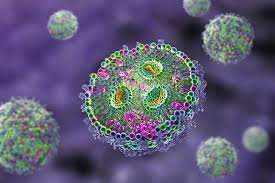In the relentless battle against cancer, scientists and researchers continually seek innovative approaches to improve treatment outcomes and patient prognosis. One such avenue of exploration gaining traction in recent years is the utilization of lipid-based nanoparticles as potent weapons against this formidable disease. In this article, we delve into the applications of lipid nanoparticles in cancer therapy, exploring their potential to revolutionize the landscape of oncology.
Understanding Lipid-Based Nanoparticles
Lipid-based nanoparticles represent a class of nanoscale carriers engineered from lipids, which are natural or synthetic molecules capable of self-assembly into various structures. These nanoparticles offer a versatile platform for drug delivery, providing a lipid bilayer environment conducive to encapsulating therapeutic agents such as chemotherapeutic drugs, nucleic acids, or imaging agents.
Targeted Drug Delivery:
One of the hallmark features of lipid-based nanoparticles is their ability to deliver therapeutic payloads selectively to tumor sites while minimizing systemic toxicity. By functionalizing the nanoparticle surface with targeting ligands, such as antibodies or peptides, lipid nanoparticles can home in on specific cancer cells or tumor microenvironments, enhancing drug accumulation at the site of action and improving treatment efficacy.
Enhanced Drug Solubility and Stability:
Many anticancer drugs face challenges related to poor solubility and stability, limiting their bioavailability and therapeutic efficacy. Lipid-based nanoparticles offer a solution by encapsulating hydrophobic drugs within their lipid bilayers, thereby improving drug solubility and protecting them from degradation in physiological environments. This approach prolongs drug circulation time in the bloodstream, facilitating sustained release and accumulation at the tumor site.
Overcoming Multidrug Resistance:
Multidrug resistance (MDR) poses a significant obstacle to successful cancer treatment, whereby cancer cells develop mechanisms to evade the cytotoxic effects of chemotherapeutic agents. Lipid-based nanoparticles can circumvent MDR by encapsulating multiple drugs with distinct mechanisms of action within a single carrier. Additionally, the unique properties of lipid nanoparticles, such as their ability to bypass efflux pumps and penetrate cellular barriers, contribute to overcoming drug resistance and restoring sensitivity to chemotherapy.
Theranostic Applications:
Lipid-based nanoparticles hold promise as theranostic platforms capable of integrating diagnostic and therapeutic functions into a single entity. By incorporating imaging agents, such as fluorescent dyes or contrast agents, lipid nanoparticles enable non-invasive visualization of tumors via various imaging modalities, including magnetic resonance imaging (MRI), computed tomography (CT), or fluorescence imaging. This dual-purpose approach facilitates early detection, real-time monitoring of treatment response, and personalized treatment planning.
Emerging Strategies:
Recent advancements in lipid nanoparticle technology have spurred the development of novel strategies for cancer therapy. These include stimuli-responsive nanoparticles capable of triggered drug release in response to specific cues within the tumor microenvironment, such as pH, temperature, or enzyme activity. Furthermore, the integration of immunomodulatory agents into lipid nanoparticles holds promise for harnessing the immune system to combat cancer, augmenting the efficacy of conventional therapies and unleashing potent antitumor immune responses.
Challenges and Future Directions:
Despite the remarkable progress in lipid-based nanoparticle research, several challenges remain to be addressed. These include optimizing nanoparticle stability, scalability, and biocompatibility, as well as overcoming biological barriers to achieve efficient drug delivery to tumors. Additionally, the translation of lipid nanoparticle-based therapies from preclinical studies to clinical applications necessitates rigorous safety evaluation and regulatory approval.
Looking ahead, the future of magnetic nanoparticles for cancer therapy appears promising, with ongoing research focusing on refining nanoparticle design, enhancing targeting strategies, and unraveling the complex interplay between nanoparticles and the tumor microenvironment. With continued innovation and collaboration across disciplines, lipid-based nanoparticles hold the potential to redefine the standard of care in cancer treatment, offering new hope to patients and clinicians alike.
In conclusion, lipid-based nanoparticles represent a versatile and promising approach to cancer therapy, offering solutions to longstanding challenges in drug delivery and treatment resistance. With their ability to target tumors selectively, overcome biological barriers, and integrate diagnostic and therapeutic functions, lipid nanoparticles herald a new era in precision oncology, where tailored therapies hold the promise of improved outcomes and enhanced quality of life for cancer patients.
